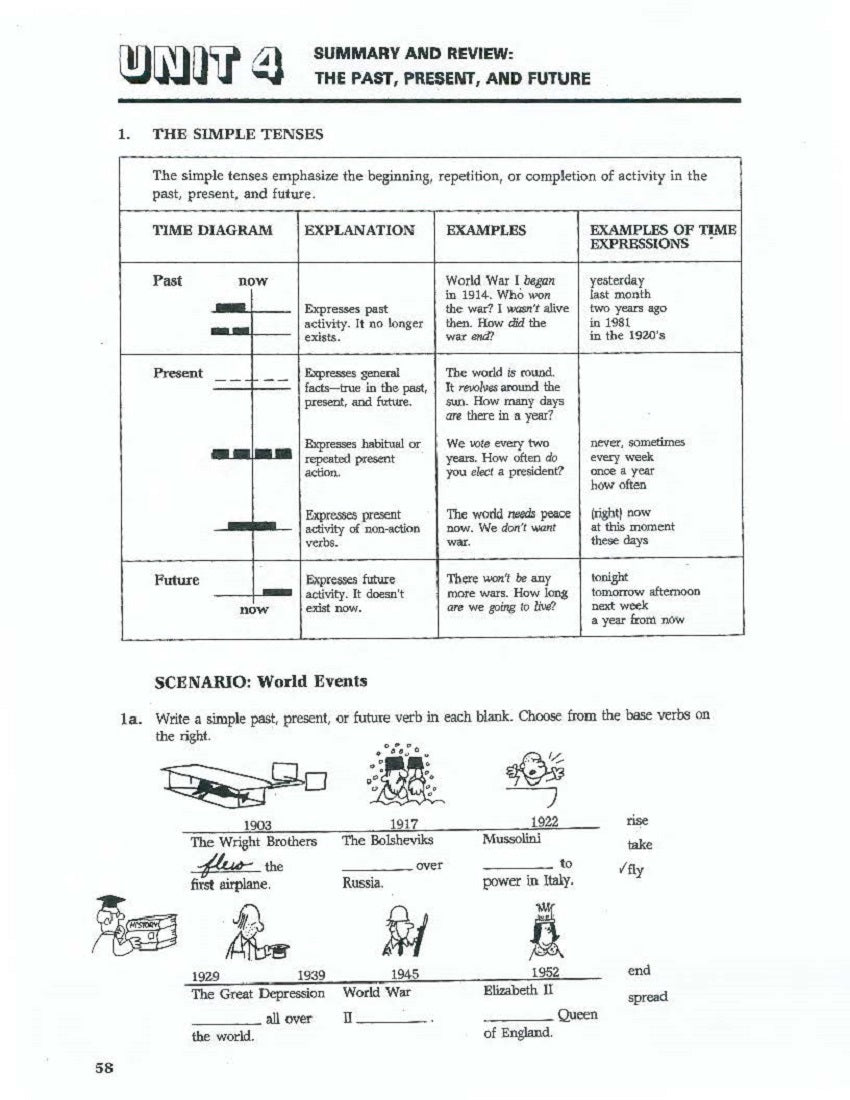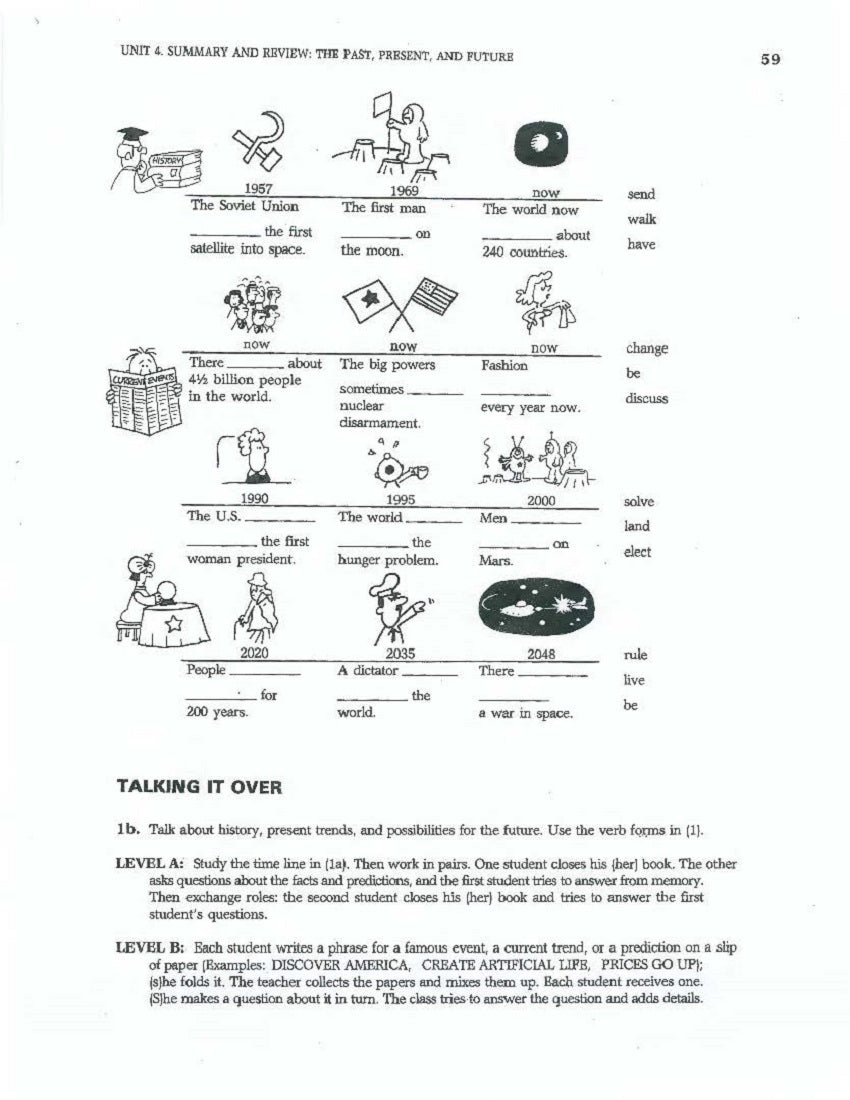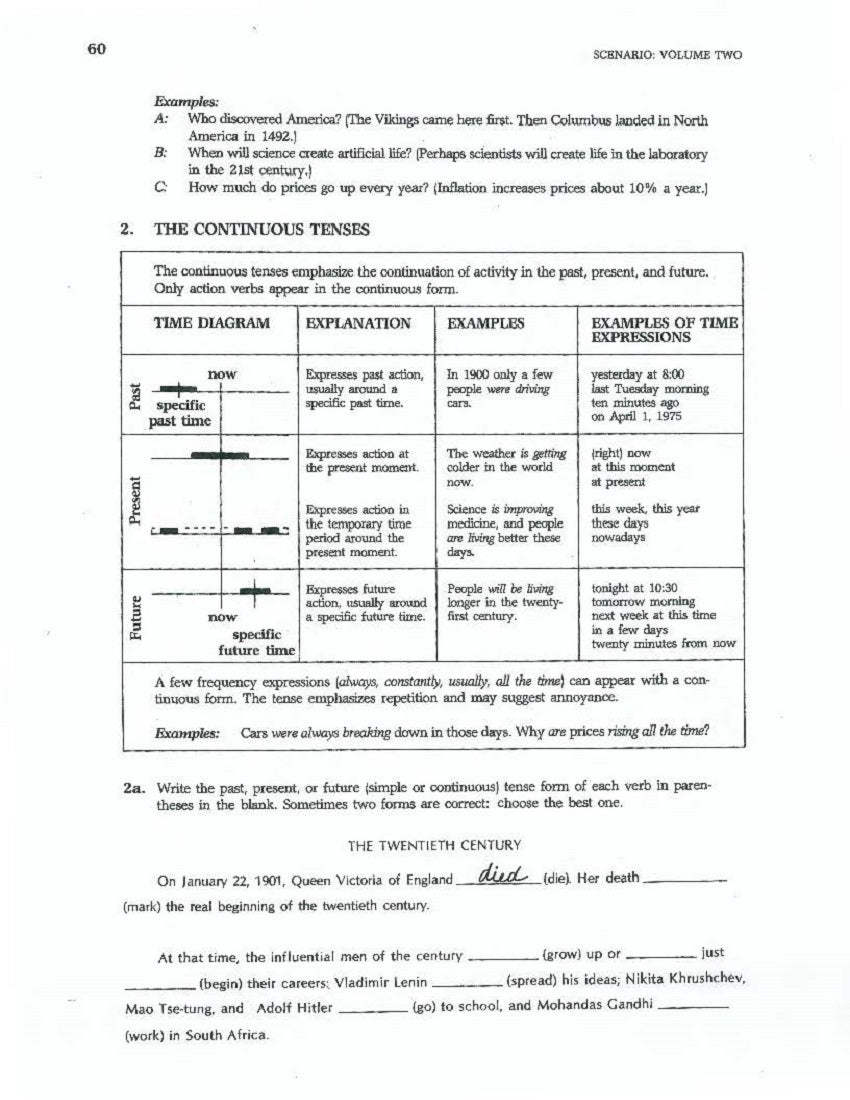Work/Life English
D-10.04 Summarize & Review Verb Tenses (Past, Present, Future) in Simple, Continuous & Other Forms & Meanings
D-10.04 Summarize & Review Verb Tenses (Past, Present, Future) in Simple, Continuous & Other Forms & Meanings
Unit 4 of the Original Scenario, Volume Two: English Grammar in Context: Summary & Review: the Past, Present, & Future (“World Events”), pages 58-64
7 pages
Who It’s For: (Self) Teachers & Helpers at (High) Intermediate to Advanced Proficiency Levels Who Like to Learn from Linear Charts, Line Drawings, & Time Lines
Why It’s Useful: “Linguistic lecturers and learners alike are likely to learn language from largely linear layouts and likeable life lines.” But the “leveled lessons” in these pages elicit more than labor. Even though their (actual and imagined) “World Events” extend only from 1908 to 2048, their venerable language (in explanations, exercises, and activities) and visuals (in tables, charts, and illustrations) from the Past merit another look in the Present and the Future.
What You’ll Do:
Couldn't load pickup availability






